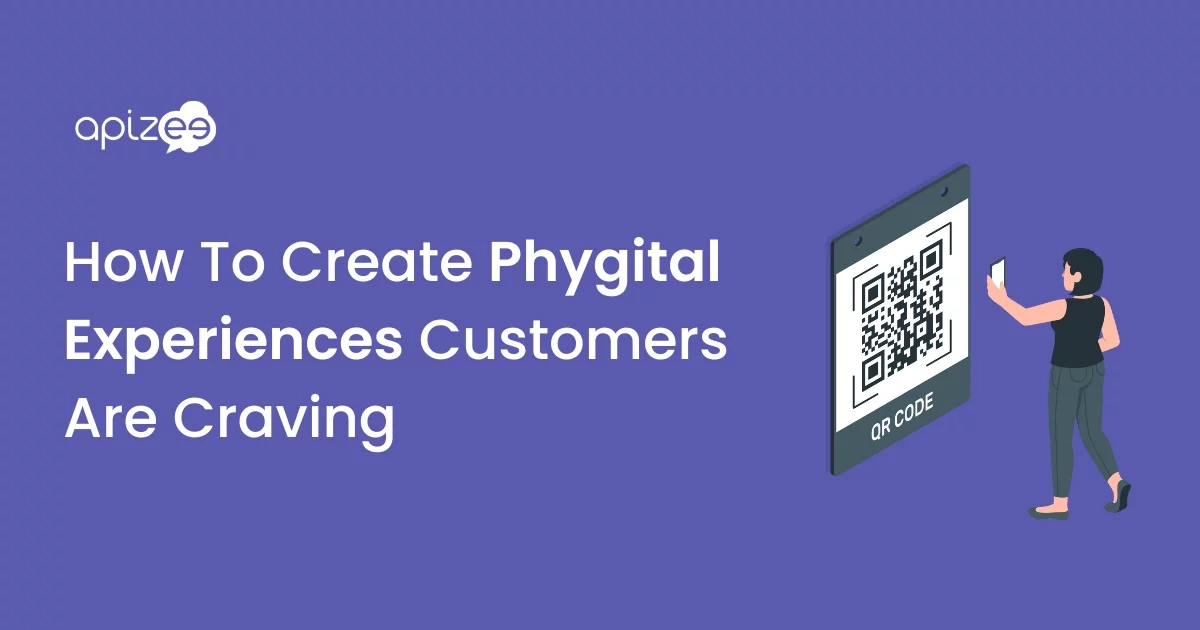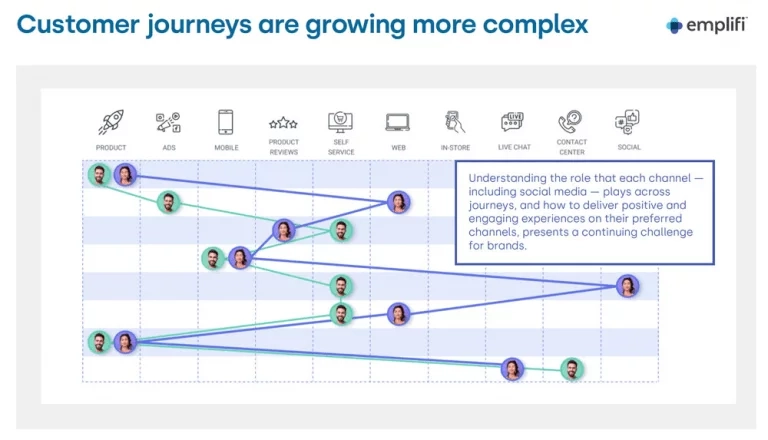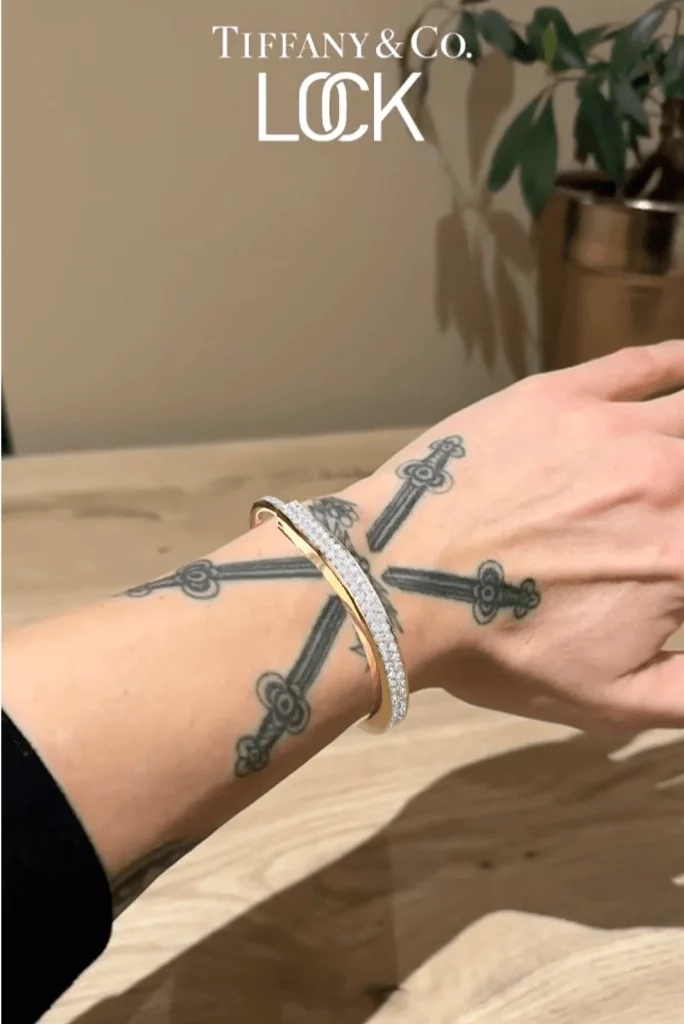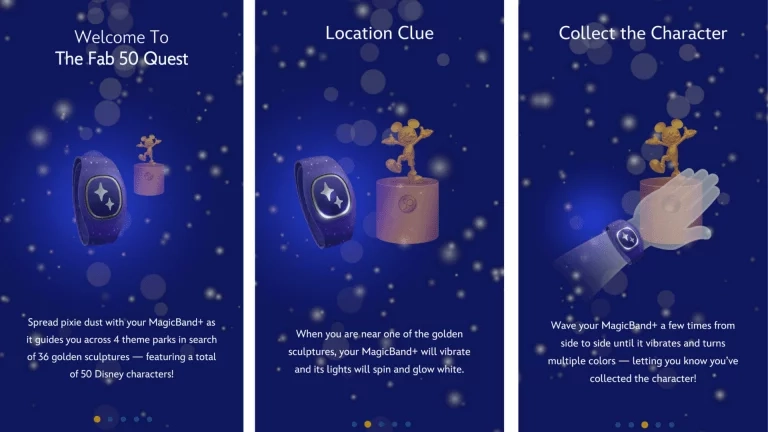How To Create Phygital Experiences Customers
Are Craving



It’s time to rethink how you approach in-person versus online environments for your customers. In fact, you might need to reconsider the distinctions between physical and digital spaces altogether.
In PwC’s 2023 Global Consumer Insights Survey, many consumers heading to physical stores reported they’d be keen to see in-store entertainment and try immersive digital experiences (such as virtual reality). However, 28% still want to be able to book one-to-one appointments with a sales adviser or personal shopper.
It’s clear that customers want both digital experiences and human interaction. Answer this call – and gain a competitive advantage – by enhancing your physical touchpoints with digital services.
In this article, you’ll learn what makes a customer experience “phygital,” some examples of the strategy in action, and four steps for creating your own.
The CEO of Australian advertising agency Momentum Worldwide invented the term “phygital” back in 2007 to “describe the connection between physical and digital ecosystems where all brand experiences lie.”
Today, phygital means connecting customers’ physical experiences to their digital experience seamlessly. And thanks to the big brands raising the bar and tech integrating into our everyday lives (more so since the pandemic), it’s become an expectation.
Customers now want a blend of physical and digital experiences, whether on their desktop, mobile phone, third-party devices, or offline.
For example, touchscreen kiosks popping up in fast food chains allow you to flick through the ingredients and order your food without speaking to anyone.

Source: Evoke Creative
Some magazines also now have scannable QR codes that instantly take you from a paper ad to a digital purchase:

Source: FIPP
Customer service has also gone phygital. Say you’re having trouble operating a machine you just bought. Instead of waiting for a call-out so an engineer can physically inspect the machine, you can connect with reps via video.
Apizee’s click-to-video option suits those looking to recreate the one-to-one customer and salesperson interaction online by immediately putting customers in front of remote assistants.

Whether you’re humanizing a digital service or digitizing your in-store experience, phygital makes it possible.
Phygital and omnichannel are two terms that people often use interchangeably. However, while they are different, both are connected and overlap in several ways.
Omnichannel refers to the seamless connection between digital and physical channels to create unified customer experiences. A customer should be able to contact you over the phone and get the same experience as contacting you via your chatbot.
Whether that’s your website, app, contact center, or social media platforms, they all work together to make the customer journey as effortless as possible.
Phygital is about enhancing human interactions with technology. You can use these experiences to experiment with engaging marketing tactics and upgrade in-person encounters.
The practice is well-suited to retail businesses and those with a physical space because it blends the in-store experience with people’s digital habits. Companies can also use phygital tactics by implementing temporary pop-up stores and one-off immersive experiences.
Phygital and omnichannel are not mutually exclusive. You can use both to empower customers, personalize their journey, and create unforgettable events that deepen connections.
As well as the benefits of face-to-face interaction (such as deeper connections and increased trust), digital services give your customers control and flexibility.
Here are some of the ways that phygital can cover both sides.
Every customer journey is unique. When someone is deciding which brand or service to choose, they go through various channels to research, compare, analyze, and decide.
Even when they’ve narrowed down a product, some prefer to see and touch it before reading reviews and buying online. Others like to learn more about a product and company from the website before physically buying through a self-service kiosk.
Here’s what a couple of different customer journeys can look like:

Source: Emplifi
All of these touchpoints can jump from digital to physical spaces and back again.
A recent study from Salesforce found that more than half of customers prefer to engage through digital channels and to complete their purchases online (versus in-store).

Source: Salesforce
That means less than half of customers prefer engaging in person and shopping in-store.
If your business only meets customers online, you’re potentially missing out on half of your target market. Amazon Go created its cashier-less convenience stores to appeal to both sides.
People also spend over twice as much of their leisure time in digital spaces instead of physical ones. Implementing a phygital strategy means you’ll be able to give both types of customers what they want when they want it.
Creating a digital world or physical experience that encapsulates your brand can be a lot of fun. It allows you to get creative and try to appeal to your customers in innovative ways.
CX Futurist Blake Morgan agrees. He says that one day:
“Stores will become experimental showrooms where customers can connect with brands in new ways, rather than to purchase items. They want to touch products, see how they work and then have them personalized and delivered quickly to their homes.”
An increasing number of brands are implementing technology and artificial intelligence into their phygital approach. For example, luxury brands like Dior, Gucci, and Fendi have recently used Snapchat’s 3D viewing and augmented reality (AR) try-on filters to appeal to younger demographics.
Tiffany & Co. is one of the latest using Snapchat’s first Lens built with ray tracing technology. This allows people to view the bracelet from different angles and imitates how light would naturally bounce off it in the physical world.

Source: Beyond
As well as being interactive and more engaging, it gives users a more realistic idea of what the physical product looks like before they buy it.
In one of PwC’s latest surveys, the availability of digital technology (such as self-service kiosks, apps, and scan-and-go) was high on the list of physical shopping attributes. However, a knowledgeable and helpful sales associate topped them all.

Source: PwC
Targeting both types of attractions with a phygital strategy could increase footfall by appealing to both types of consumers.
Phygital experiences that span multiple channels could also increase your total sales. For example, one study found that marketing campaigns using three or more channels earned a 494% higher order rate than those only using one.
You can even inspire loyalty if you manage to be consistent across all departments (and around 83% of customers agree).
So, if you’re going to mix physical and digital realms, they need to seamlessly work together to create a customer experience that makes people want to return again and again.
To keep up with modern demands, even the more traditional industries (such as law and accounting) have had to integrate technology into their services. So, while some companies are a more natural fit for implementing phygital, anyone can do it with the right strategy.
Here are three phygital examples of different industries using a mix of older and new technologies to meet customers on their preferred channels.
The retail sector is ripe for phygital evolution as most businesses are set up with physical stores and online shopping.
Cosmetics retailer Lush created an app that lets shoppers scan products in-store to see a video of what’s in it, how creators made it, and how best to use it.
With over 2.6 million scans, the Lush Lens technology could one day eliminate the need for packaging and signage. At the same time, it gives customers detailed information on their devices about the products they’re holding.

Source: Lush
Another way of utilizing phygital marketing in retail is by using in-store beacons. This sector is growing massively. The global smart beacon market is expected to reach $103.94 billion by 2030.
These Bluetooth-enabled devices can connect to smartphones and send messages that customize a physical shopping trip. For example, the Target app uses beacons to send customers relevant offers based on where they are in the store.
It can also act like a GPS for your shopping cart to show you which aisle your item is in and guide you there—even telling you whether it’s on sale.
Though celebrating its 90th birthday, Lacoste knows how to keep up with modern trends by using phygital. Its flagship retail store on the Champs Elysées incorporates visual technology throughout, with two video tunnels showing clips that represent its youthful, playful spirit.
It also includes a “polo carousel” that lets store visitors spin a motorized wheel with a touchscreen. This is a fun way of learning more about the variations of Lacoste’s signature polo shirts throughout the years with a touch of technology.

Source: IntoTheMinds
The brand’s recent store opening in London also relied on phygital experiences, including a laser tunnel, vibrant projections, and an augmented reality mirror wall to create an engaging event worth talking about.
Walt Disney World is no stranger to phygital experiences or the use of technology. However, the brand’s MagicBand has made visiting the park even more magical for guests.
As well as paying for snacks and getting into your hotel room, Disney’s MagicBand+ (the 2022 version) creates immersive experiences for users.
This wearable is in constant communication with sensors around the park, which allows it to log vast amounts of data about each customer’s movements. Disney’s team then uses that data to enhance and personalize each person’s visit in real-time.
For example, it can recognize if queues are long for rides in the section of the park you’re in. Using this information, it can suggest quieter areas of the park to reduce congestion and keep everyone happier.

Source: Disney Parks
The band also uses vibrations and color-changing lights that interact in time with fireworks, music, and visual effects. Wearers can even link it to the park’s app to go on Star Wars or Disney-themed AR quests.
At specific locations, the band will vibrate, while gesture recognition technology (like waving at statues) will help you hit virtual checkpoints.

Source: MiceChat
As well as creating new immersive experiences for guests, Disney says these bands cut turnstile transaction time by 30% and added over 5,000 more people to the park’s capacity.
The world of banking is mainly split into two main camps: traditional and digital.
Traditional banks with physical locations have high costs but the benefit of face-to-face customer interactions, which build trust. Newer digital-only banks promise convenience and a simpler customer journey but lack human interaction (usually preferred for more significant financial decisions).
One study of UK banks compared the vast differences in the number of clicks it takes to create an account between these types of banks. It revealed that it takes more than 3x the clicks for traditional bank HSBC as it does for its digital counterpart Revolut:

Source: Built for Mars
Banking sector innovators now understand they need to balance faster digital touchpoints and trust-building human interactions. How? By moving into the phygital world and using it to optimize customer engagement.
Creating phygital experiences within banking can include:
Back in 2017, Spanish CaixaBank launched its 1,200-square meter multipurpose “imaginCafé” branch in central Barcelona. The space aimed to appeal to creatives by offering co-working units and a variety of events and initiatives that blend technology, music, and art.
Still running today, imaginCafé holds video-art exhibitions, gaming sessions, DJ sets, cinema screenings, and more.

Source: imaginCafé
While this co-working space doesn’t double as a bank branch, it’s meant to create a local hub where people can meet and collaborate—bringing humanity back into a traditionally faceless industry.
Any industry can create phygital experiences and marketing strategies that appeal to your customers.
So, follow this four-step process to ensure you’ll be putting time and resources into the areas that count.
Mapping out your customer journey allows people to empower their own journey. For example, some people go into stores to speak to advisors, while others want to touch the product but avoid that interaction.
It’s important to note that different demographics also use technology in different ways. For example, Gen Z consumers are 1.6x more likely to prefer engaging with brands through digital channels than Baby Boomers.
Understanding your audience’s preferences and behaviors means you can figure out where phygital experiences could enhance the current customer journey and lead them down the marketing funnel.
Here’s an example of a customer journey map that represents how a segment of buyers (emotional buyers) work toward a goal over time:

Source: Nielsen Norman Group
Using this map, you can see all the touchpoints where you could implement phygital. For example, a click-to-video option could connect a potential buyer with a salesperson in a car showroom who could walk them through different models.
Mapping out these different stages can help you spot opportunities and create experiences that align with your customers’ needs at that time.
Once you know the main channels where your audience expects to find you, you can start looking at the technology and resources you need to enhance them.
You may want to replicate some of your showroom in a home environment or create a more convenient, digital in-store experience.
Here are some of the ways you may choose to use technology to implement phygital:
For ecommerce businesses, consider a pop-up store offering digital customer services. That way, customers can enjoy the real-world experience of seeing your products in person with the added convenience of personalized recommendations based on data.
Whichever tactics you choose, it’s best to start simple and then move on to more complex ideas.
Taking on too much too soon could mean that you won’t implement any of them very well. You could also risk overwhelming your employees or failing to get buy-in from your customers.
When Disney introduced its MagicBand idea, over 70,000 cast members got MyMagic+ awareness training to bring them all onto the same page. While you’ll unlikely have a budget of over €900 million, the reasoning still applies.
Focusing on one phygital experience at a time allows everyone to get to grips with the new system faster. You can help employees adapt with the following approaches:
Implementing phygital in stages also means you can track the impact of the technology and how your customers feel about it. For example, you could collect this data with in-person surveys or those sent through push notifications or emails to ask if buyers enjoyed the process.
If they say yes, keep doing what you’re doing. If they weren’t so keen, think about what you could change to improve it.
Some 88% of customers say the experience a company provides is just as important as the product or services it offers. Brands must now go above and beyond to make people feel more connected to them.
Two ways to do this are through:
Mastercard’s CMO Raj Rajamannar agrees:
“You have to optimise each one of the five senses, to persuade consumers to make choices in favour of your brand. There is an incredible amount of clutter today and how you cut through it is critical.”
Brands are now understanding the impact of one-off phygital events that immerse customers in their identity and appeal to their senses.
It can be challenging for drinks brands to get customers to relate to them, but Hendrick’s Gin has a whimsical, Victorian-esque brand identity that inspires curiosity. While organizing “A Journey Most Unusual” (an interactive experience in Sydney), the team got the chance to express this in a physical setting.
With rooms inspired by (and designed to invigorate) each of the senses, actors turned the guests into characters they could interact with. As they explored, cast members offered them a variety of drinks and scents to sample.

Source: By Eacott Agency
While this demonstrates the more extreme end of the phygital scale, customers clearly bought in as the five-night event sold out. It also allowed the brand to retell its heritage in an out-of-the-ordinary way that the audience wouldn’t quickly forget.
Many people are just learning what the term “phygital” means. But soon, it will be the norm for creating user experiences that align with our technologically-integrated lives.
Jumping on board now means you’ll be a pro by the time many brands are just starting out.
If your customers would appreciate a phygital experience like one-click video assistance, learn more about what we can offer at Apizee.
Explore key findings from the Genesys State of Customer Experience report. Learn how AI, omnichannel strategies, and video chat are transforming CX and enhancing customer satisf...
The State of Customer Experience report by Genesys : Key Insights and Trends
27 Mar 2025
Despite AI and automation, customers still prefer to speak to a human for support. Discover why human interaction remains essential for great customer service.
Why Customers Still Want to Speak to a Human in Customer Service
17 Mar 2025
Discover the top customer experience influencers in Europe, shaping the future of CX and customer service.
Top 100 Customer Experience Influencers to follow
10 Mar 2025
Interested in our solutions?